Especially when I was starting out, the plants I collected tended to provide some kind of use. Often food; but I also see value in plants that create timber; textiles; medicine; or which act to support the more ‘useful’ plants within an ecosystem.
It was really only after I spent a year working at a garden center that I began appreciating plants for more aesthetic reasons and started adding purely ornamental plants as well. But by and large the majority of trees here are either native, or have specific reasons for being here.
This approach means I am growing some interesting and unusual things. If I read about a plant I think could grow here that has some use, it goes on my ‘list’. I search it out. And it is a massive rush when I find it.
Frequently, I have planted them with the intention to propagate more from my initial investment. Why pay $100 for 10 trees when you can pay $10 and just be a bit patient and clever?
Some of these you might have heard of, others might be new for you. Most are too young to actually be producing anything just yet, but it’s possible my eclectic mixture of trees will prove valuable in the future.
Paulownia (Paulownia tormentosa)
I’m growing this as a timber tree. Also because it’s mighty beautiful in spring when it’s covered with masses of purple flowers.
Our paulownia tree at the end of August, just breaking dormancy with leaves at the tips of last year’s branches.
Paulownia comes from China. It’s both extremely light (second only to balsa wood) and fast growing – up to 6m per year in the right conditions. It has large, furry leaves that can be used as stock food. Best of all, it responds to coppicing, so the same tree can be harvested dozens of times by cutting it down and allowing it to re-grow.
Before we moved, I’d researched timber trees and thought it might be ideal. It grows fast, regenerates, and its weight means harvest could be manageable by a couple of people and some hired equipment if necessary. I just wasn’t totally sure if it would grow here.
That is until I began seeing trees covered in bright purple flowers in both Kaeo and on the way to Waipapa on State Highway 10. “I’m sure that’s Paulownia!” is something I must have muttered to Richard at least a hundred times.
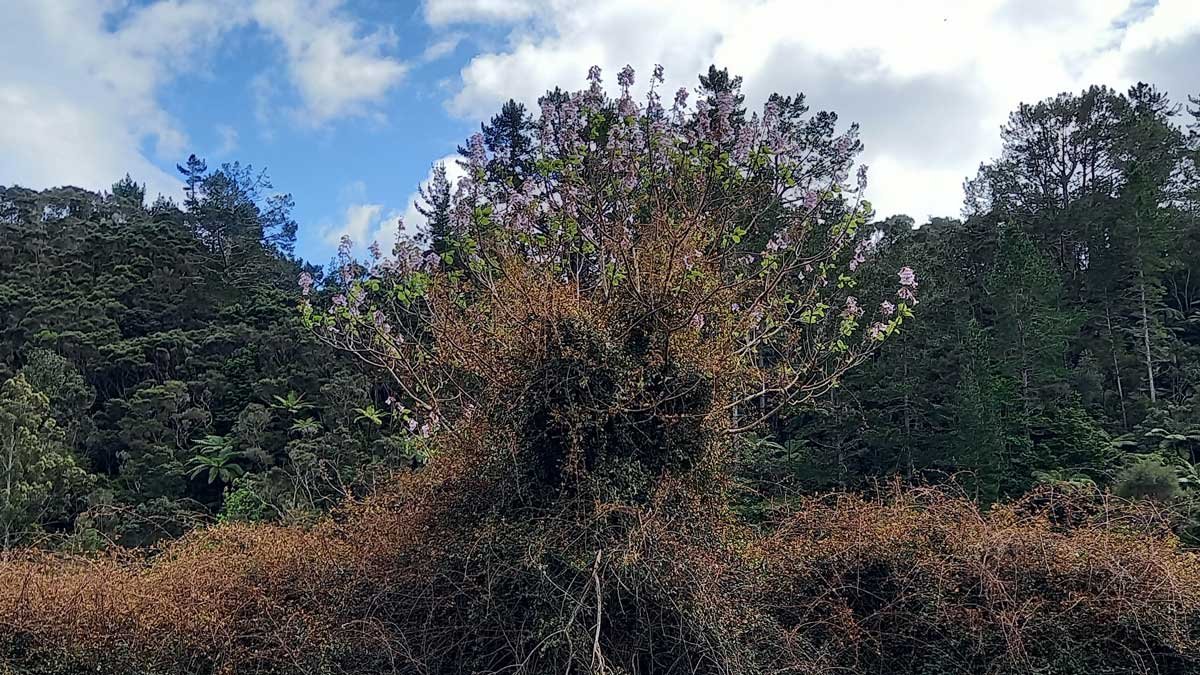
Paulownia tree flowering in Kaeo.
A workmate who was there when the Kaeo trees were planted confirmed that yes, that’s exactly what they are. And she was with me when I picked out a stumpy looking tree for my birthday last year.
It’s planted near the gate to the property, mostly because it’s a beautiful tree to welcome guests. It didn’t grow 6m last year, but I do think it’s put on at least 20cm since it broke dormancy in August. Maybe it just needed to get settled in.
Paulownia is fairly easy to root from cuttings. I’m still not sure whether it will produce good timber at our property, but this initial tree could form the basis of a plantation if and when we decide to go for it.
Ice cream bean (Inga edulis)
We inherited these plants when we purchased the property. There are 4 planted between our original banana patch and the tagasate.
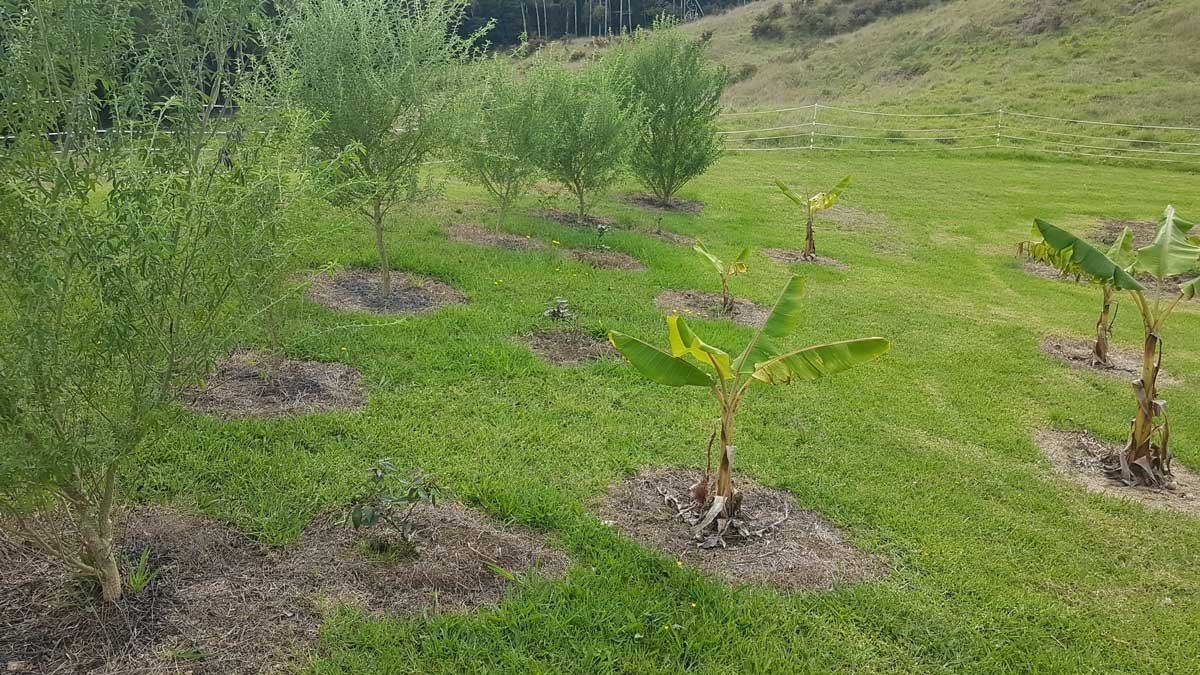
March 2021.
It’s known as ‘ice cream bean’ because the candyfloss-like pulp in the seed pods tastes like vanilla ice cream. The bean is also edible after roasting – though it is toxic if eaten raw. Inga bean comes from South and Central America where it also has uses in traditional medicine.
Like the name implies, they are a bean – making them a legume – meaning they are also able to fix nitrogen in the soil. This makes them popular as a support tree. They are frequently used as a canopy tree for coffee and tea, providing the dappled light they prefer as well as the extra nitrogen in the soil.
Reportedly, they also make good firewood as they respond well to coppicing and produce very little smoke. Not something I’ve tried, but good to know!
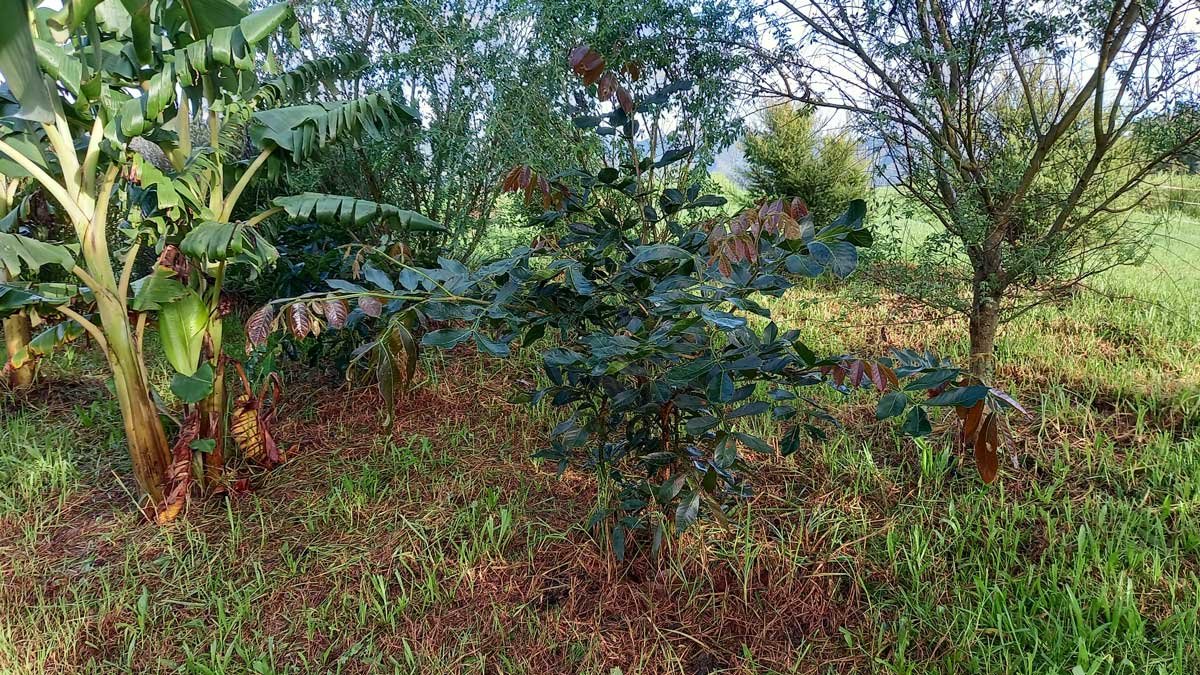
Our trees are maturing slowly – possibly they are in too much shade. They take around 3 years after planting to flower, so perhaps we’ll see something in the next couple of years.
Again, my plan here is really to give me something to propagate from. Any beans we get will be grown as it’s the kind of plant I can find a lot of uses for.
Pine nut (Pinus pinea)
The Christmas after Richard and I moved into our first rental together, we were discussing getting a Christmas tree.
“OK, but only if it’s a pine nut” I said.
Well, blow me down. A couple of days later we were at the local hardware store and what did we find?!
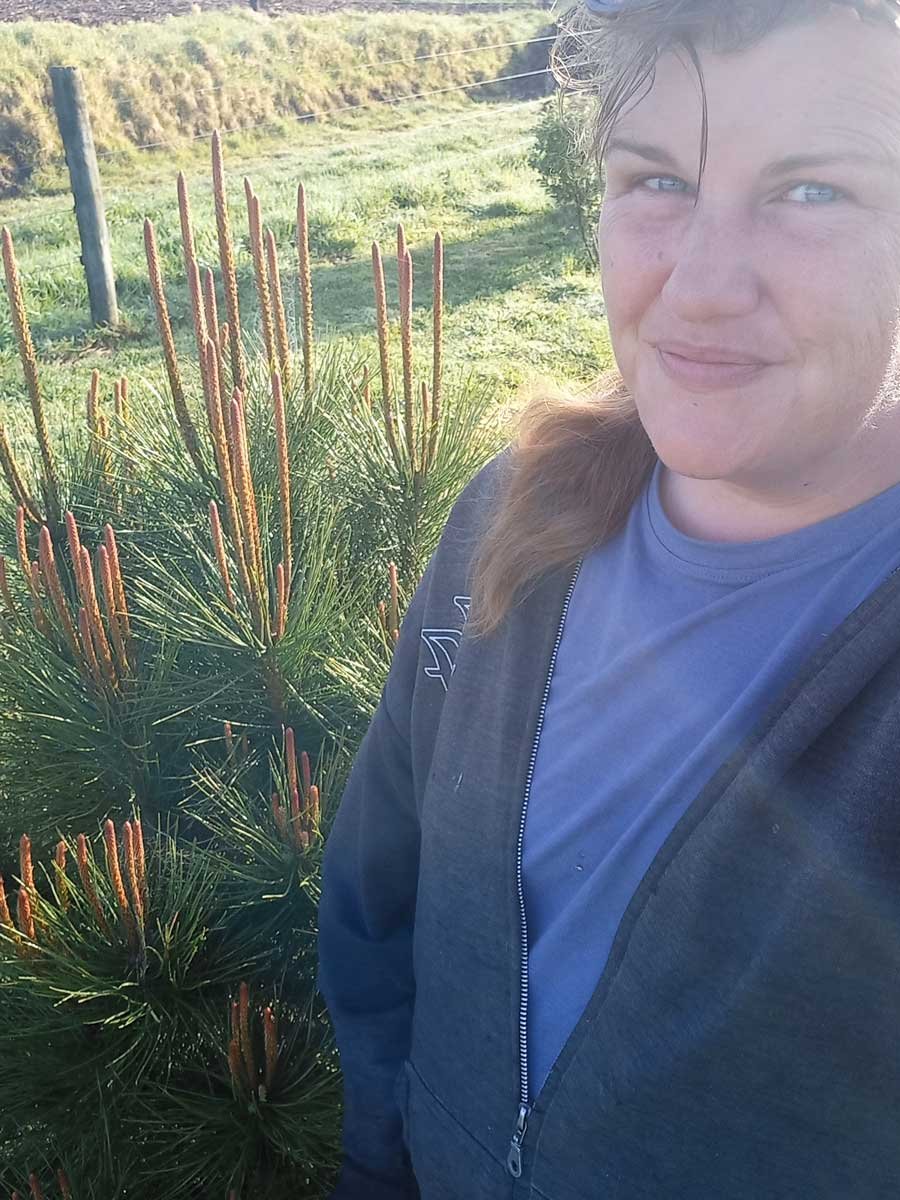
This tree is most notable as the first tree we planted here. It went into the ground less than a month after we arrived, and should be taller than I am in another year.
I’m told the cost of pine nuts comes from the fact they are so incredibly difficult to get out of their cones. So I don’t know if I’ll ever make my own home-made pesto using home-grown pine nuts.
But I absolutely have plans to cover it in fairy lights and red baubles each year. I’m thinking it might be big enough for the baubles this year.
Soapnut (Sapindus mukorossi)
I purchased my soapnut tree from a Waipu subtropical nursery before we moved, and it came with us to The Outpost in a pot. It’s lived in the ‘plant holding area’ up until very recently.
I found I had the opportunity to add this as a canopy tree when I began planting my first attempt at a food forest, so even though it’s one of the oldest trees here, it’s only just entering it’s first season in the ground, and therefore currently looks more like a stick than a tree.
Apparently it can take 9 or 10 years to get fruit. I don’t know if its years in a pot count, but I’ve had it for about 4 years now.
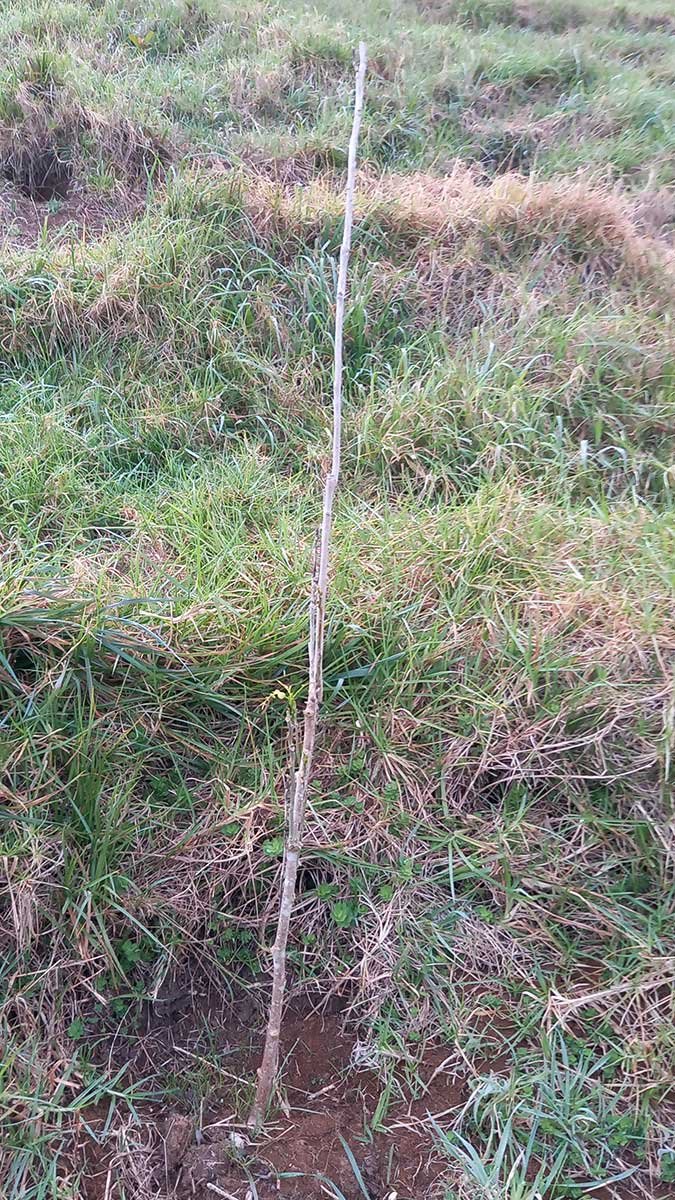
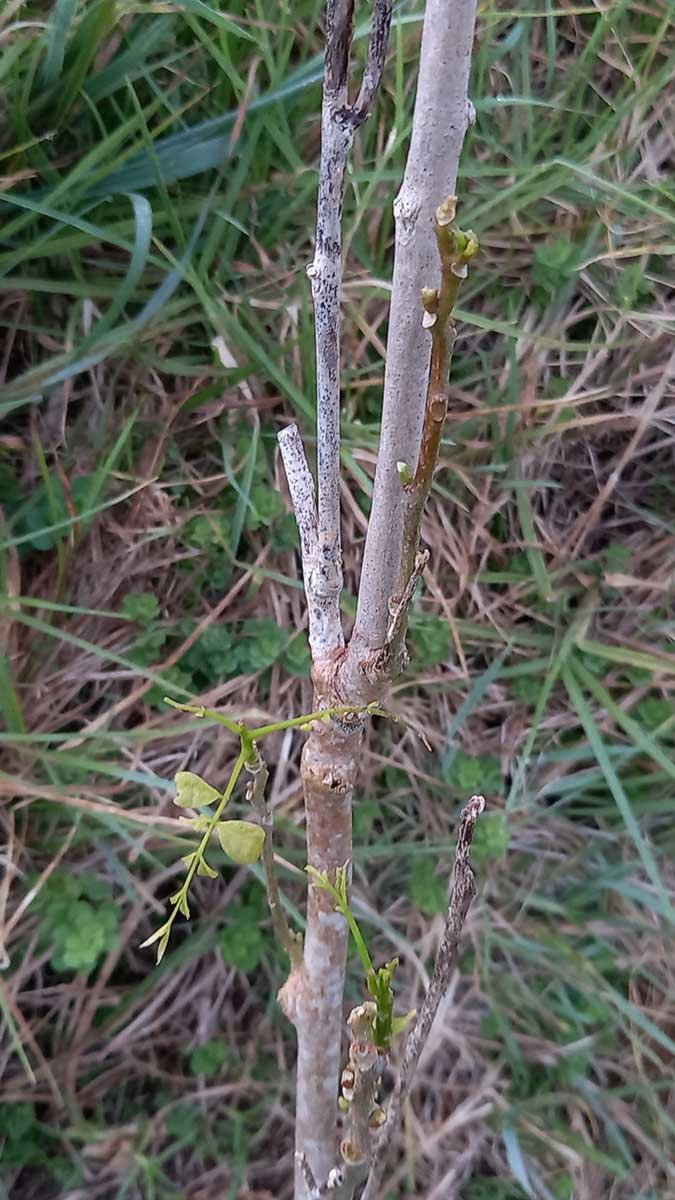
Soapnut is a deciduous tree that produces fruit which are high in saponins. In their native India and Nepal, they are used for laundry and cleaning. They are also used for a range of ailments within ayurvedic medicine.
It’s possible to purchase soapnut products for home laundry. It’s a paraben-free, natural, non-allergenic way to wash your clothes if commercial detergents are an issue for you.
Round leaved mint bush (Prostanthera rotundifolia)
This one is native to Australia. I love it because it smells incredible and has these wonderful purple flowers all over it in spring.
It’s also known as ‘native oregano’. The leaves are very aromatic, a bit like a cross between rosemary, thyme, mint, and oregano.
It can be used as an oregano-like herb, or brewed into a tea. It has been used in indigenous medicine to treat headaches and colds.
I’d never heard of it until it arrived at work one day. I wasn’t totally sold until I saw it flower. Then it came home with me.
It’s been sitting in the ‘holding area’ for way too long and last year it defoliated a lot.
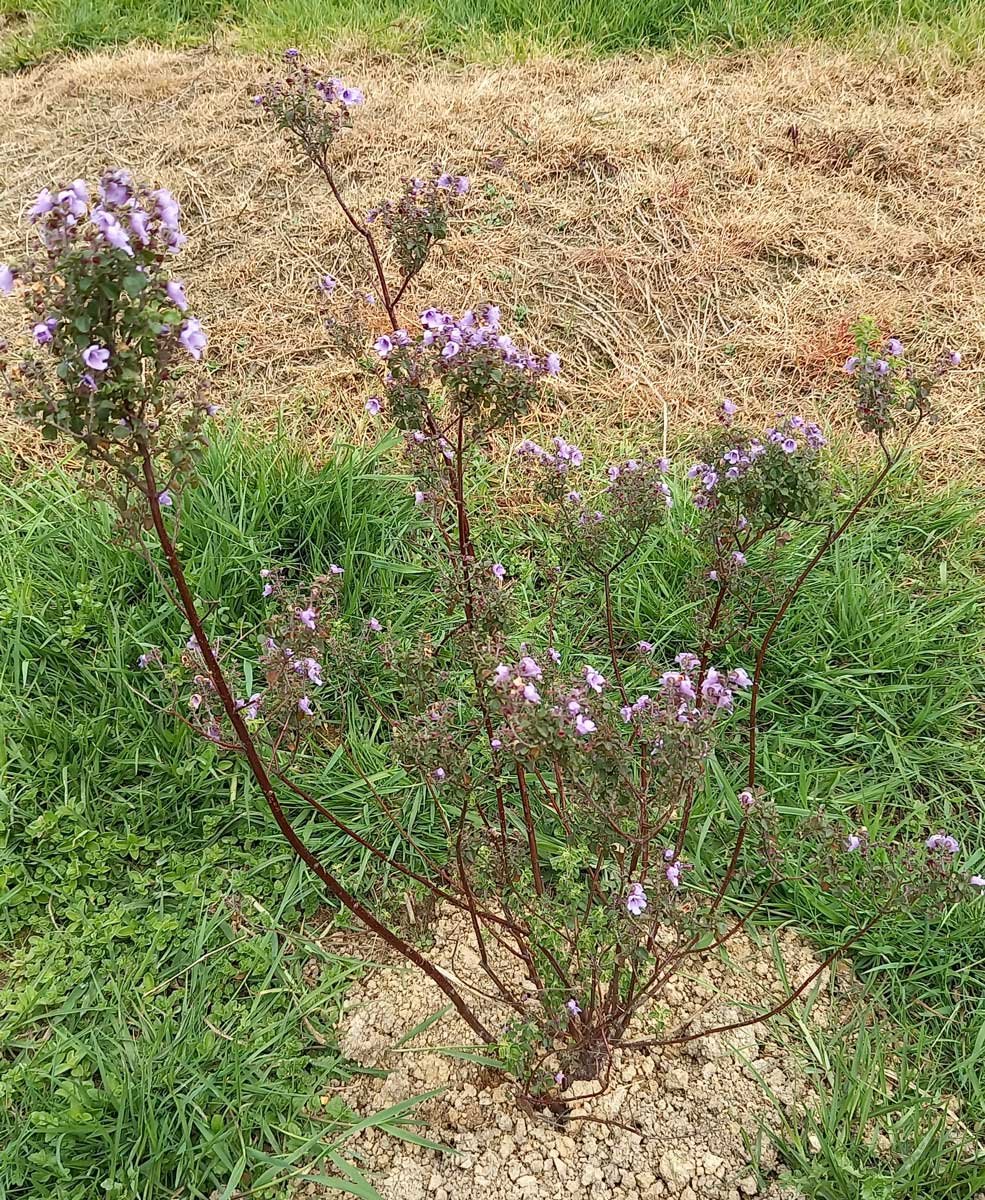
But we’ve recently planted it in the food forest area and it’s begun taking off – and flowering. I’m hoping it’ll thrive there at the base of the path.
Early days
Most of our ‘productive’ plants and trees haven’t produced anything yet. We’ve only been here 3 years and good things take time. So far the apples are the only harvest we’ve had, and their planting pre-dates us.
But! These trees are in the ground now. They are growing. I’m seeing trees I planted get taller than I am. It’s quite a thrill to look at them and think ‘I put that there, and now look at it!’
The big dream involves putting an ever-increasing range of weird and wonderful plants over a couple of paddocks. Progress is maybe a bit slow, but it is happening. One day there might be a blog about washing my clothes with soapnuts, or maybe a surfboard from paulownia I grew – who knows?!
The possibilities are endless if I just keep planting.




